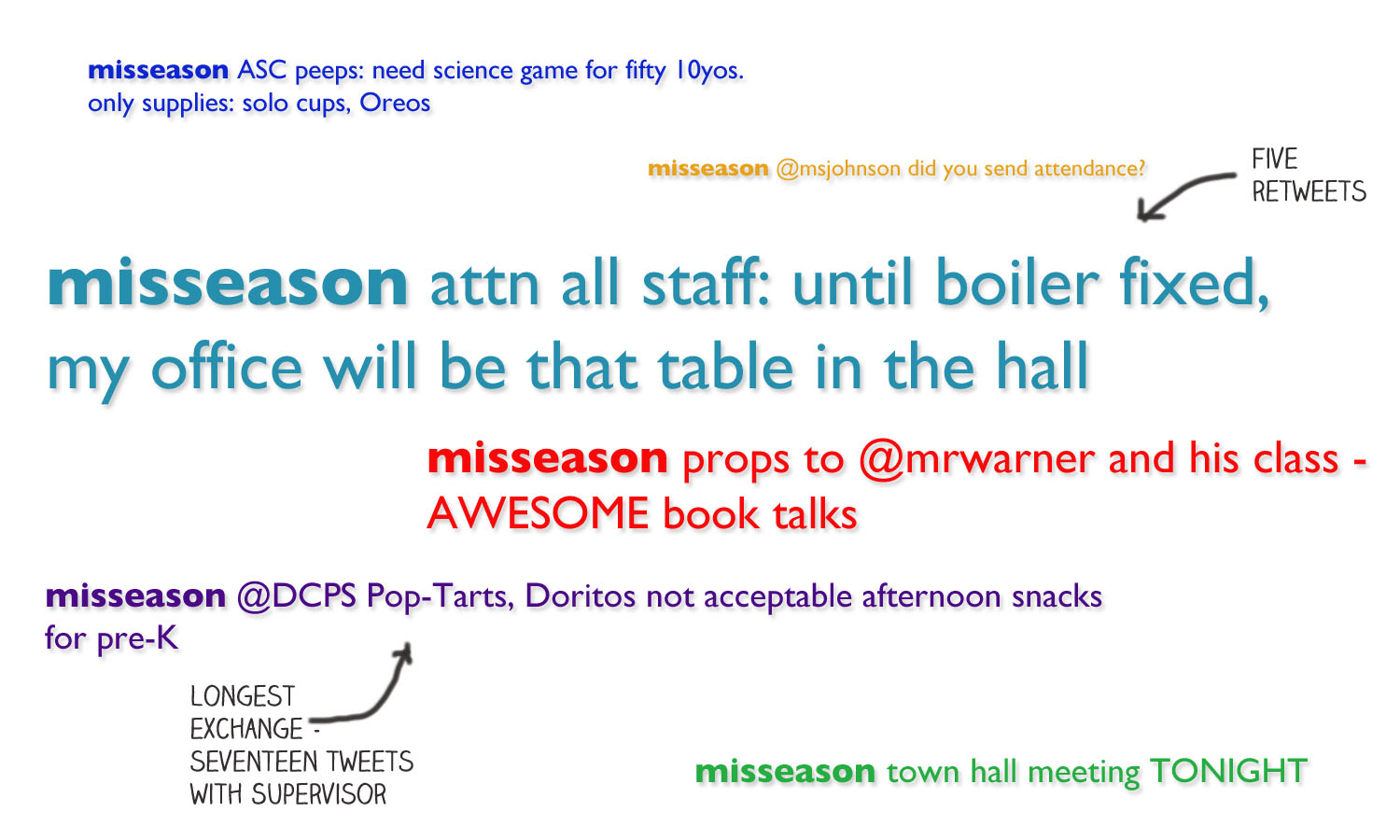Lessons from #PDF12: leaving the republic of Nerdistan

I spent more time tweeting during my 48 hours at PDF12 than I had in the past six months. This is not an exaggeration; I ran the numbers. (And you can too, if you follow me, @hillaryeason. Ahem.) Part of this, of course, was due to the fact that I was at a conference that was About Technology; not only was this kind of tech widely used, it also acted as a signaling mechanism, establishing the Tweeter as someone who was engaged and tech-savvy. In that respect, at least, the demands of this job differ substantially from my last gig.
But as I was thinking about the ways in which I, as an NDI employee, actually use Twitter, I realized that I certainly could have used this kind of technology the last time I worked in this city. I ran an after-school program in a high-crime, low-income neighborhood that served 200 kids and employed 20 staff. I had next to no resources, was constantly trying to communicate information to overworked teachers who were never in the same place at the same time, and had to somehow funnel info on all of these challenges to my bosses at the public school district in order to make any kind of change. Isn't that what Twitter is for?
The reasons that I didn't use Twitter then, of course, are fairly obvious. I wasn't in an environment where constant Tweeting was known or accepted as a professional tool. Most of the people I would have communicated with didn't even have Twitter. And most importantly, the time and resource demands of the job were really intense. If I was going to work in social media time in between collecting donations, negotiating with community organizations, and addressing kindergarteners' asthma attacks, it would need to be portable, simple, and accessible everywhere I needed to be. And it wasn't.
I'm going to borrow from Alice Walker here and describe this as the issue of "everyday use." And for me, it was both one of the most engaging and most frustrating aspects of PDF12. A lot of the sessions focused on the glitz of new technology or the success that some initiative had had in engaging a population that was already tech-savvy - in, for example, online fundraising and political organizing. The stories they told were neat, but only relevant for people who already use the Internet. How we get people to actually use technology - like that after-school coordinator who isn't using Twitter - is much harder.
Fortunately, there were a lot of speakers who did look, on both a micro and a macro level, at this divide. Cheryl Contee, of Jack and Jill Politics, gave a particularly moving speech about the new digital divide, and pointed out that the digital tastemakers of today too often use one specific discourse, and have a very specific vision of what it means to be tech-savvy. And David Karpf, in his presentation on online organizing, made the very salient point that tools don't, in and of themselves, create communities of change.
The best summation of this issue that I found, however, came from Leslie Harris, who called upon all of the attendees at the conference to "leave the republic of Nerdistan." It's time for us to recognize that tech knowledge - and tech usage - come in many forms, and that the utility of technology is not limited to people who blog on the Huffington Post. We need to understand that the kid who fails his math class but sends elaborate texts in class has tech knowledge, too. We need to realize that technology can be useful for everyone - for cashiers and sheep farmers and moms, not just online journalists and new media consultants. It's time for us to travel out of Nerdistan, and see for ourselves that it's only one country in a wider world.
